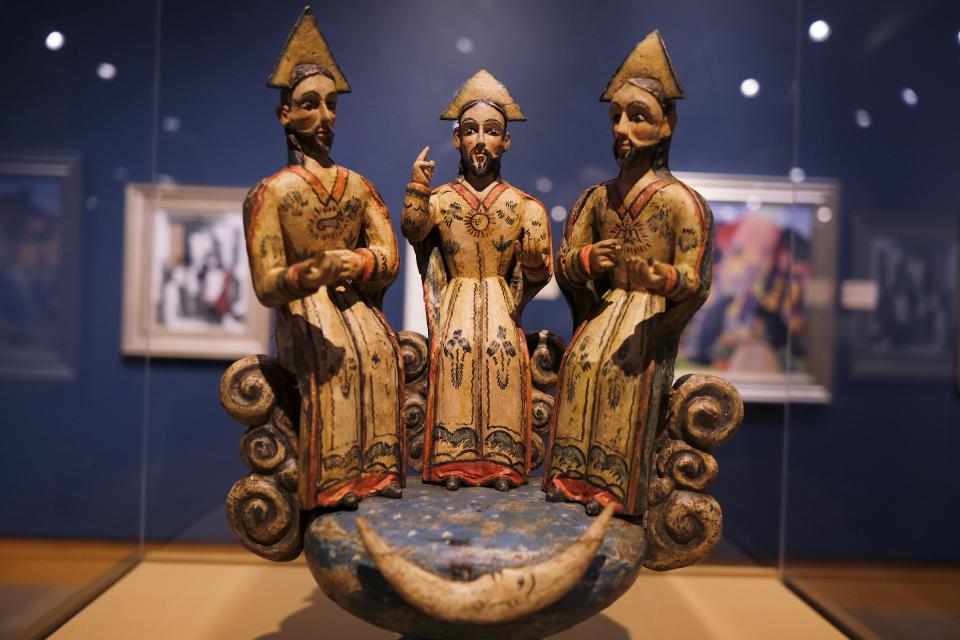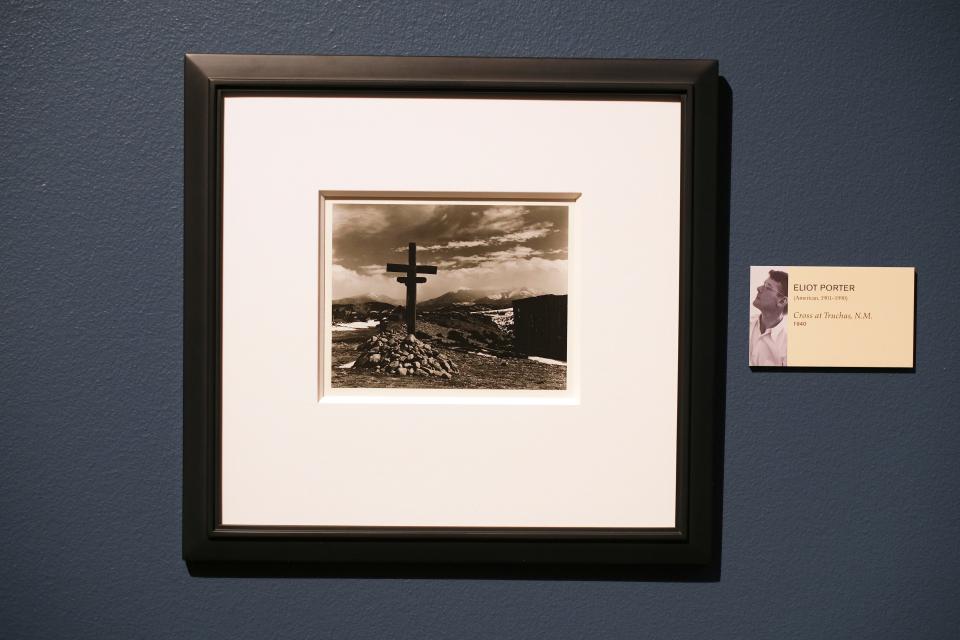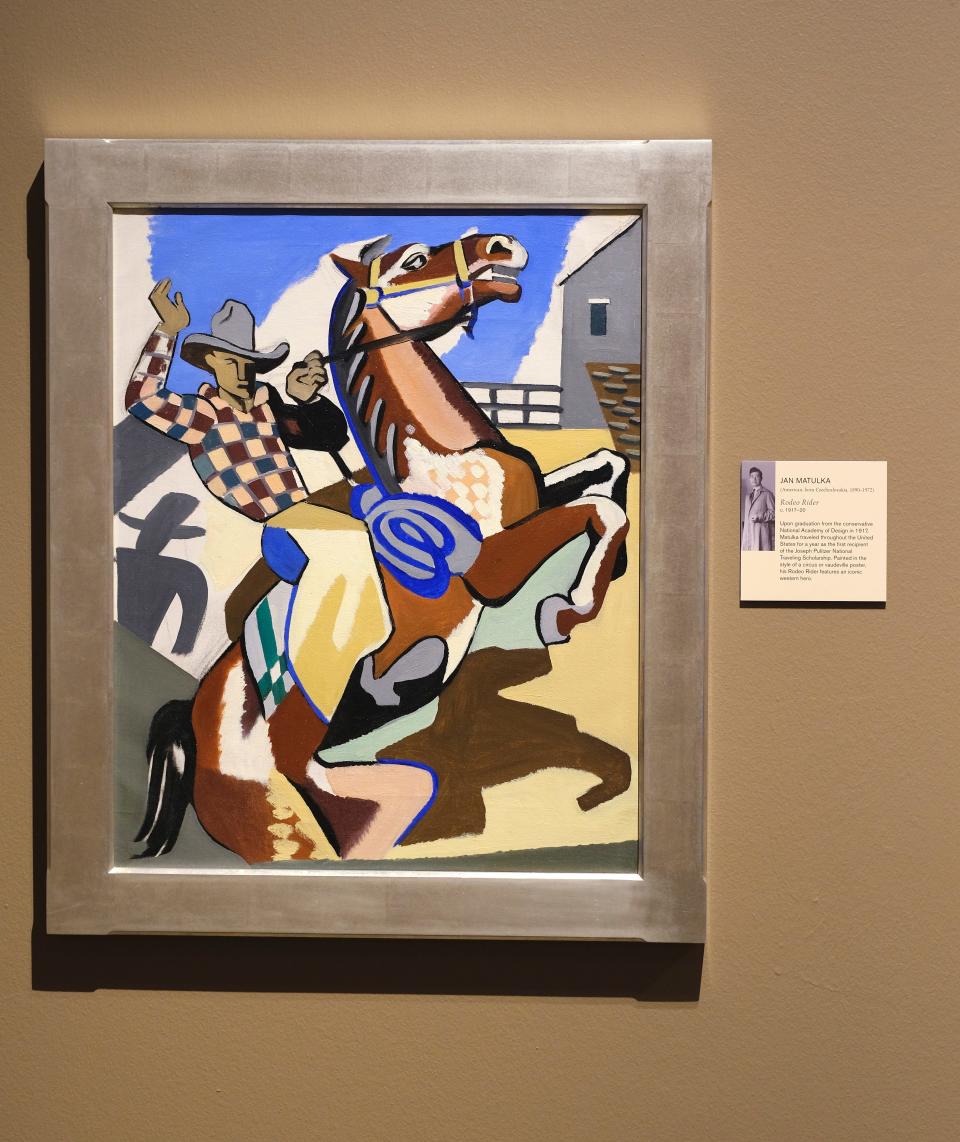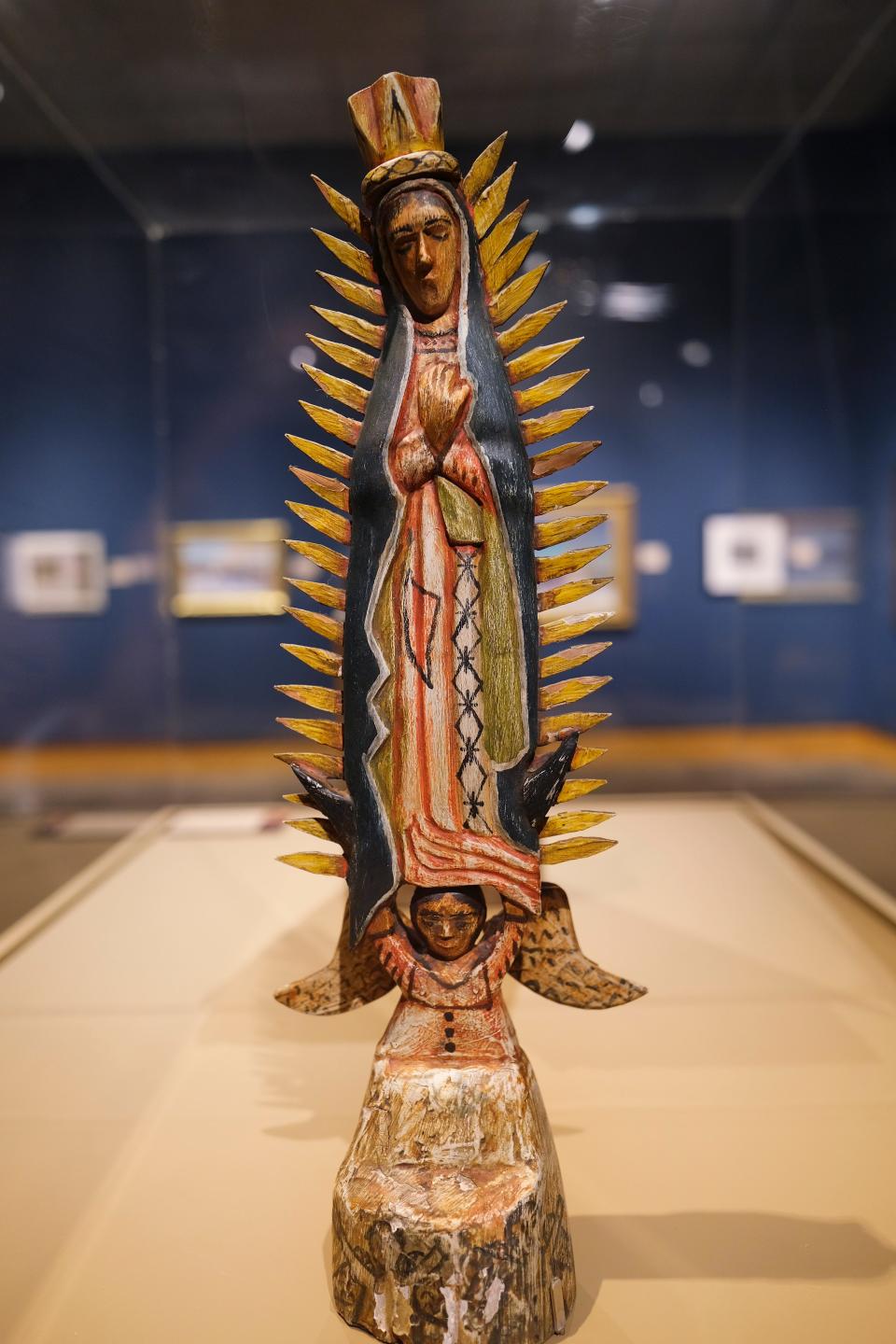An anonymous art lover. A vast collection of New Mexican art. 'New Beginnings' ends in OKC.
- Oops!Something went wrong.Please try again later.
An anonymous art lover became so enraptured by the Land of Enchantment that he amassed a dazzling collection of paintings, sculptures, textiles, furniture and more.
And that's just the backstory of the stunning exhibition "New Beginnings: An American Story of Romantics and Modernists in the West," which is wrapping up a three-year, six-museum U.S. tour with a stop at the National Cowboy & Western Heritage Museum.
"I've had people come up to me and say this show brought tears to their eyes. ... It's a gallery full of nines and 10s. That's how good the quality is. I mean, it's really off the charts," said Michael Grauer, the museum's McCasland Chair of Cowboy Culture. "It's difficult to assemble that many great works of art together consistently, and it's consistently great all the way through the exhibition and especially because of the different subject areas."
On view through Jan. 2 at the Oklahoma City institution, "New Beginnings" features more than 100 works curated from the private Tia Collection of Santa Fe, New Mexico. The collection is named for the daughter of the anonymous collector who has been amassing it since 2007, when he first experienced New Mexico. —
"New Mexico is a special place. It's called the Land of Enchantment for a reason, and people go there and fall in love with it. ... It was the establishment of a couple of art colonies there in the 1890s and the early 1900s that really formed the basis for this collection," said Grauer, who is also the National Cowboy Museum's curator of cowboy collections and Western art.
"It's one of the finest collections of New Mexico art that I've seen in 35 years."

Ranging from portraits and still lifes to landscapes and three-dimensional works, "New Beginnings" spans a century of New Mexican art, with pieces dating from the 1880s through the 1980s.
"You run the gamut from pretty traditional works ... that we're used to seeing associated with the Taos and Santa Fe art colonies to very, very bold and daring works that are a lot more modern," Grauer said.
The exhibit includes works by acclaimed New Mexican artists Ernest L. Blumenschein, Walter Ufer, Agnes C. Sims, E. Martin Hennings and Leon Gaspard.
"That is probably one of the most beautiful exhibits that we've had at The Cowboy in many, many years. I have been back in that gallery countless times, and each time I go back there, I choose a runner-up to my favorite — and it's always a different one," said museum President and CEO Natalie Shirley, adding that Kenneth Adams' 1937 portrait of "Juanita" is her favorite.

Here are seven more highlights to see in "New Beginnings" before it leaves OKC:
1. Dorothy Brett's 'Women's Dance' (1952)
Born into the British nobility, Brett (1883-1977) took dancing classes at Windsor Castle as a child and went on her first date with Winston Churchill. She attended Slade Art School, where she studied under Augustus John and befriended George Bernard Shaw, Virginia Woolf and Aldous Huxley.
In 1924, she visited Taos with celebrated novelist D.H. Lawrence and his wife, Frieda. When they returned to England, Brett stayed in New Mexico, where she lived and worked as an artist for the rest of her life.
Her fascination with American Indians reportedly began as a child when she saw "Buffalo Bill's Wild West Show" in London, and she became perhaps best known for her paintings of Taos' Native American culture, especially her evocative depictions of Pueblo dances. As biographer Pamela Hall Evans noted in "Remarkable Women of Taos," Brett tried to paint "their inner as well as outer selves" when depicting Native Americans.
2. Patrocino Barela's 'Untitled' (1930)
One of the exhibit's Hispanic artists, Barela was "a rock star in the Museum of Modern Art in New York in the 1930s," Grauer said.
"New Beginnings" includes multiple examples of the self-taught wood carver's works, but his "Untitled" 1930 piece, which could function as an oversized footstool, is arguably the most eye-catching.

3. Jan Matulka's 'Rodeo Rider' (circa 1917-20)
Born in Bohemia (in what later became Czechoslovakia), this painter and printmaker came to the United States as a teenager and studied at the conservative National Academy of Design. Upon his 1917 graduation, Matulka (1890-1972) trekked across the country for a year as the first recipient of the Joseph Pulitzer National Traveling Scholarship.
The modern artist was especially drawn to the Native and Hispanic cultures of the Southwest, which he depicted in stylized geometric works. In "Rodeo Rider," he paints an iconic Western figure in the style of a circus or vaudeville poster.
4. Beulah Stevenson's 'Camino del Monte Sol, Santa Fe' (1947)
It's hard to imagine a vast exhibit of art made in and about New Mexico without gorgeous landscapes, and "New Beginnings" boasts an entire section devoted to "Land and Sky." But Stevenson's colorful abstract canvas stands out.
A Brooklyn painter and printmaker, Stevenson (1890-1965) studied with John Sloan at the Art Students League of New York as well as with abstract expressionist Hans Hoffman in Provincetown, Massachusetts, joining the Santa Fe arts colony during summers.
"One of the things about the women artists that really comes through in this exhibition ... is that women were far more willing to take risks with their art than men," Grauer said. "Because women often had to reinvent their art over and over again, they tried new things and were far more avant-garde than the men, who tended to play it safe."
5. Henriette Wyeth's 'The Fourth Saint' (1983)
The daughter of well-known illustrator N.C. Wyeth and sister of famed painter Andrew Wyeth, Henriette Wyeth (1907-1997) is best known for her portraits, including her likeness of First Lady Pat Nixon in the White House Collection, and her still lifes like the prettily intriguing "The Fourth Saint."
A child prodigy, Wyeth grew up in Pennsylvania, but she moved to New Mexico in the 1930s after marrying fellow artist Peter Hurd and lived there for the rest of her life.

6. Frank Applegate's 'Our Lady of Guadalupe' (1924)
It wouldn't be a proper show of New Mexican art without the Virgin of Guadalupe, and Applegate's (1881-1931) depiction of the Roman Catholic "Patroness of all the Americas" is particularly striking.
7. Robert Henri's 'Lucinda' (1917)
The Mexican girl pictured in Henri's (1865-1929) portrait seems almost too real to be a mere painting. In a 1917 letter to his mother, the artist described Lucinda as "a fine little saffron queen of about six years. Last year she was not an enthusiast about posing but this year she likes to come," particularly since the portraitist would play music on his Victrola for her.
"Lucinda" is among more than 170 portraits Henri painted during three extended Santa Fe residences in 1916, 1917 and 1922, but they were rarely exhibited in his lifetime, despite his fame.
'New Beginnings: An American Story of Romantics and Modernists in the West'
When: Through Jan. 2.
Where: National Cowboy & Western Heritage Museum, 1700 NE 63.
Information: https://nationalcowboymuseum.org.
This article originally appeared on Oklahoman: An anonymous art lover's vast collection of New Mexican art, 'New Beginnings,' ends in OKC

